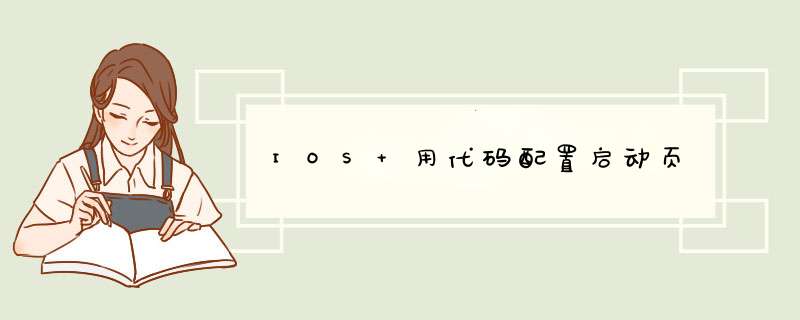
2,在APPDelegate.m中增加属性:@property (strong, nonatomic) UIView *launchView
3,在- (BOOL)application:(UIApplication*)application didFinishLaunchingWithOptions:(NSDictionary*)launchOptions;中调用下面方法
-(void)setLaunchImg{
UIViewController *viewController = [[UIStoryboard storyboardWithName:@"LaunchScreen" bundle:nil] instantiateViewControllerWithIdentifier:@"LaunchScreen"]
self.launchView= viewController.view
self.launchView.frame = CGRectMake(0, 0, self.window.screen.bounds.size.width, self.window.screen.bounds.size.height)
[self.window addSubview:self.launchView]
UIImageView*imageV = [[UIImageViewalloc]initWithFrame:CGRectMake(0,0,self.launchView.frame.size.width,self.launchView.frame.size.height)]
[imageVsetImage:[UIImageimageNamed:@"logo.jpeg"]]
imageV.contentMode = UIViewContentModeScaleAspectFill
[self.launchViewaddSubview:imageV]
[self.window bringSubviewToFront:self.launchView]
//可以设置启动页的存在时间
[NSTimer scheduledTimerWithTimeInterval:3 target:self selector:@selector(removeLun) userInfo:nil repeats:NO]
}
-(void)removeLun
{
[self.launchView removeFromSuperview]
}
自从Xcode 12+开始,使用LaunchImage配置固定大小图片的方案已被苹果爸爸废弃,想要设置启动页需要通过LaunchScreen,个人理解苹果之所以作这样的改动是基于苹果新推出的全面屏和越来越多的屏幕尺寸以及Safe Area机制(这里要注意,Safe Area需要iOS 9+)
创建工程,随之会自动创建一个LaunchScreen.storyboard的文件
点击打开可以发现和传统的xib文件无差别
可以在这个storyboard上可以放置各种ImageView、Label等,但需要注意UI控件必须添加在Safe Area区域内,这样无论是iPhone X之后的刘海全面屏还是iPhone 8这样的非全面屏都可以正常显示,通过下方的View as:iPhone 11 可以选择各种不同的机型/横竖屏来查看当前启动页的展示情况
如果本文对你有所帮助记得点个赞哈 :)
欢迎分享,转载请注明来源:内存溢出

 微信扫一扫
微信扫一扫
 支付宝扫一扫
支付宝扫一扫
评论列表(0条)